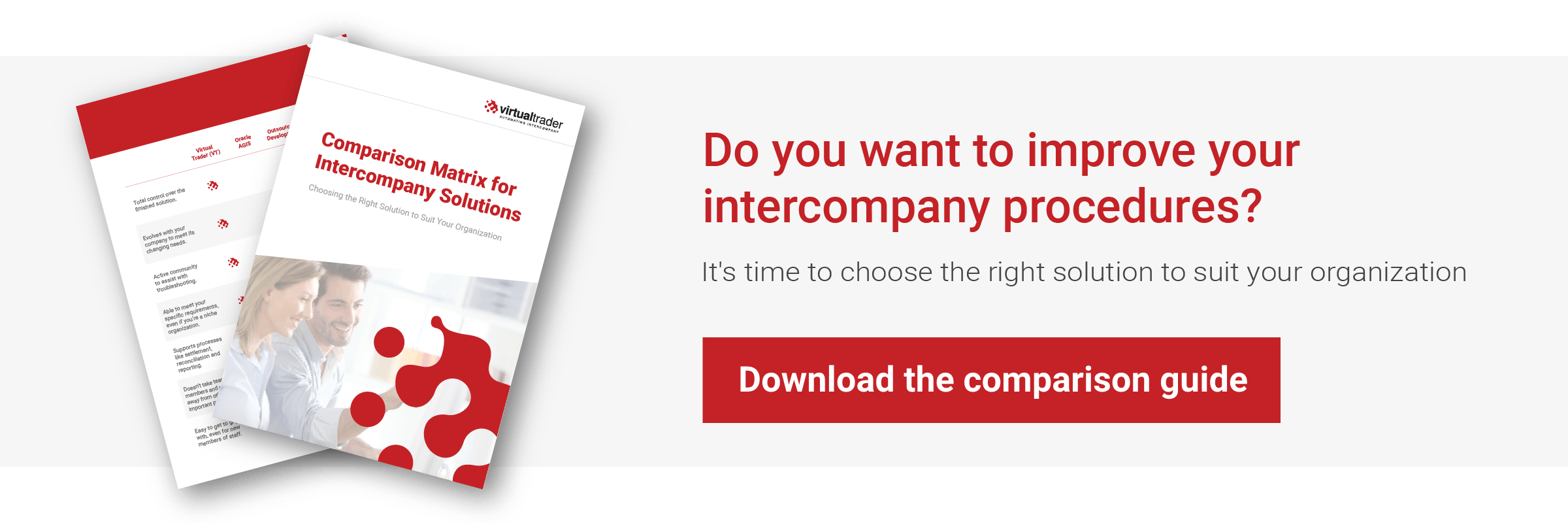Something as simple as a software update can cause you hours of frustration. Intercompany is the last action to occur during period close, so there’s little time to compensate for reconciliation issues, such as software updates.
Any lengthy delays can cause the close to be late, leading to serious financial problems and opening the door for your competition to get ahead. Here’s how software updates are slowing you down and how to minimize the risk of them derailing your next period close.
How Do Software Updates Harm Intercompany Transactions?
When companies expand their global reach and acquire smaller companies, it can be difficult to implement organization-wide processes and practices. Operating across multiple countries, time zones, and tax codes can cause serious problems.
These growing global networks make intercompany transactions complicated, especially if each link in the chain is using different software. There’s no guarantee that the entity you’re dealing with uses the same software as you. Even if you’re both using Oracle AGIS, for example, their version or modules within EBS might be older than yours.
Conflicting systems can be a problem when it comes to intercompany transactions. If there’s no remote integration, your intercompany process won’t be able to accept and manage the data it receives. Converting the data to a format your system can understand is an extra step in what can already be a complicated process.
If your organization has implemented an automated system to manage and settle intercompany transactions, you’ll need to be aware of any potential issues that could arise. Period close is an important time for your business, and any unwanted interruptions or obstacles can have significant consequences.
Missing important deadlines and declaring figures late can lead to financial and legal problems. Late or incorrect statements can have a negative impact on a company’s reputation, stock price, and shareholder value.
If you’re using an automated system for intercompany transactions, you might already be aware of how frustrating software updates can be.
Issues with a Created Solution
You might have commissioned — either in-house or via an external source — the development of an automated system to streamline your intercompany trade. A problem with this approach, however, is that the development team may have used a base platform that regularly issues updates.
These platforms are regularly tweaked and updated, but the developers of a platform are unlikely to be aware that the changes they made have caused you problems. One tiny change in a single line of code in an update can significantly affect the timeliness and efficiency of reconciliation. It can take hours or even days to get the whole system back online, which can cause serious problems at period close.
If you don’t have a maintenance contract with the developers of the system, it can be both time consuming and expensive to have everything fixed — not to mention the cost of having the software future proofed to prevent this happening with every update.
By the time you’ve managed to fix the problem, you might have missed period close. Failing to publish these results can cause a serious chain of events that can hurt your organization in the long run — especially as regulatory bodies are taking greater effort to audit and enforce correct intercompany practices.
Other Solutions That Can Help
There are solutions available that are able to manage software updates quickly and effectively. Virtual Trader (VT) is a module that sits within Oracle EBS and has been designed so it can cope with any updates to Oracle without it breaking.
VT minimises any risk from software updates while still managing the full intercompany life cycle. It automatically creates, settles, and reconciles intercompany transactions, removing the chance of human error causing the published results to be incorrect.
VT is a scalable solution that matches your organization’s needs as it expands and grows. As you move into new territories and markets, VT reduces any problems that might arise because of differing tax laws or regulatory demands.
VT can accept transactions from any system that might be used by smaller companies you deal with. It takes the data, produces invoices or journals, and posts them into the appropriate subledgers ready for them to be settled.
Unlike other solutions, VT offers advanced settlement options that illuminate reconciliation issues before they occur. For instance, it provides aging analysis on all journals that need to be settled. It tracks which are open at any given time and how long they’ve been open. This ensures liabilities are always settled on time and that the reconciliation process is kept as streamlined as possible.
Compare the Intercompany Management Options Available to Your Organization
Software updates are just one of the important factors you need to bear in mind when it comes to finding the right system to suit the requirements of your evolving business. Virtual Trader is one of the potential options you could choose when it comes to intercompany, but there are others to think about.
You can task your team with developing your own solution. This is a great way of ensuring that the finished build meets all of your specific requirements, which is perfect for businesses with niche needs.
Alternatively, if you don’t have the resources or team members available to create your own, there are always external sources on hand to build a system to your specifications. You’ll have access to a team of experts who specialize in creating bespoke solutions.
There are also platforms like Oracle that offer enough functionality for some businesses without them ever needing to worry about extra requirements. Through certain modules, the platform can be changed enough so it does what you need it to, although it wasn’t specifically designed to cope with all your intercompany needs (for example, intercompany transactions that concern intangible goods).
We know there’s a lot to consider when it comes to these options, so we’ve put together a comprehensive comparison guide that outlines the key advantages and drawbacks of each solution. Every organization requires a slightly different approach, so what might work for many businesses may not work for you.
You can get your free copy of the guide by clicking on the download link below.




 US
+1 800 961 9640
US
+1 800 961 9640

